The Greatest Archaeological Discovery of all Time: The Lost Civilisation
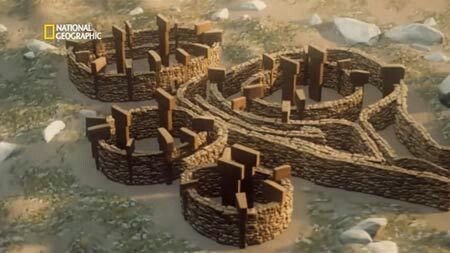
It is estimated that man has been around for the last 200,000 years, yet it has only been in recent history that there has been notable change and development. Despite this, no one can point to a specific time or place... we have experts making “educated guesses,” which tend to be proven inaccurate a few decades down the line.
Despite this, what I am about to share with you not only rewrites history, but proves our idea of civilisation being much older than what we are told in school.
Roughly 15,000 years ago, the ice age ended, which made the survival a much easier task for man. If you think about it logically, since the end of the ice age, we have constructed the most beautiful monuments, developed cutting-edge technologies, explored an incredible amount of our own plant and even danced on our own moon.
One can look to Stonehenge and see an example of incredible craftsmanship and engineering dated at roughly 3100BC; older than the pyramids by almost 1000 years.
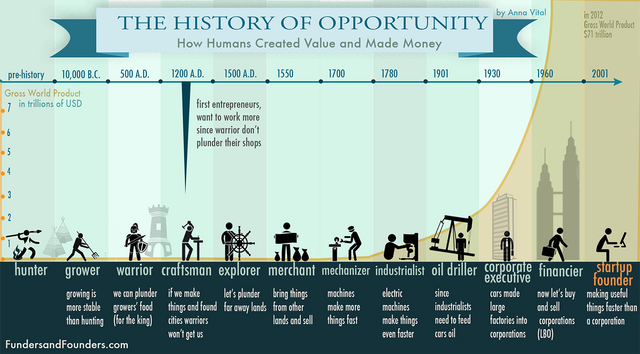
However, what I want to share with you is more than twice the age, more than 3 times the size and in an unimaginable state of preservation: Gobekli Tepe.
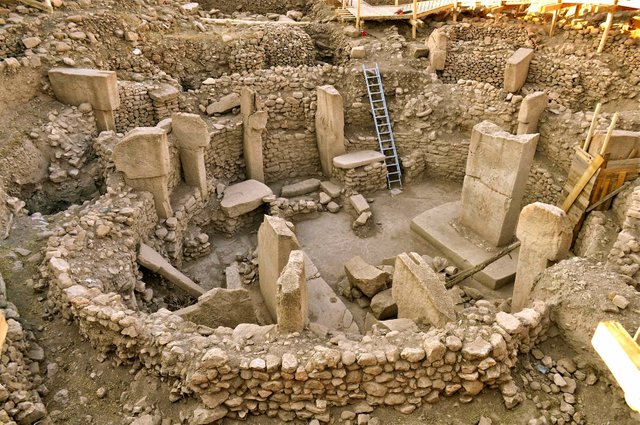
Gobekli Tepe is located in South Eastern Turkey, near an ancient city called Şanlıurfa (which is also steeped in incredible ancient history). The site, similar in some senses to Stonehenge, has monolithic T-shaped pillars arranged in a circle with stone walls built up in between each pillar. Four have so far been excavated, although ground penetrating radar proves there is at least another 16 circular “enclosures” to be revealed to the light of day.
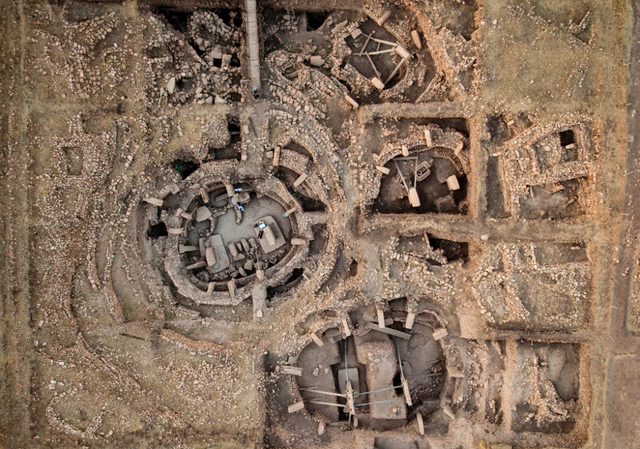
These stone-age constructions are highly decorated with exquisite artwork depicting animals on each T-shaped pillar, with two central pillar depicting man.
“Why is this significant?” you may ask...
... radio carbon-dating has revealed the excavated site to be around 12,000 years old... thousands of years before we are said to have invented the wheel or even began agricultural farming. Many animal bones have been found around the site, non of which were agricultural animals; this means they were hunted and not raised in by man.
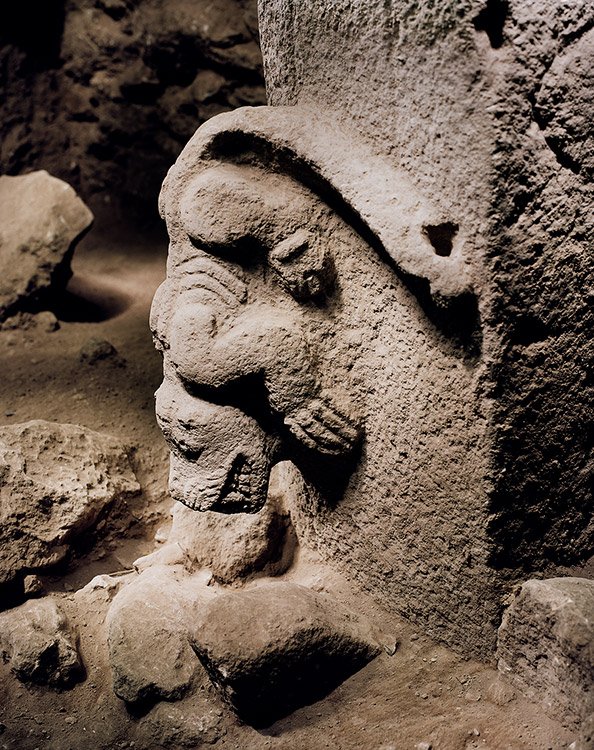
According the leading archaeological experts and scientists, humans were only able to create structures, cities and religion when we had developed agriculture and farming methods, giving early man more time to think and ponder about his world and less time used for hunting.
However, Gobekli Tepe seems to prove the exact opposite. It suggests that hunter-gathers came together to create a temple and then create a religion around it.
There would have been many different tribes of people at this time; their interactions with each other would have been limited and maybe even hostile. Yet, for people to have banded together and create such a site would have been a massive revolution. Many hands from many different tribes would have come together united to erect these monoliths and carve the highly detailed and skilled artworks. It is estimated it would have taken 100 men around 9 months to create each enclosure; a number unthinkable in 10,000BC.
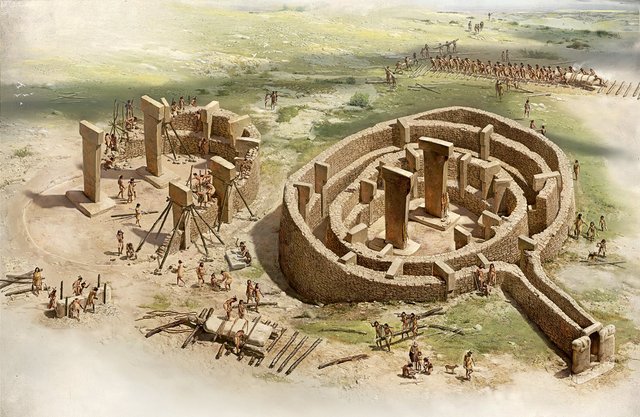
A single tribe of hunter gathers would have consisted of no more than 20 people – family and very close friends. To build something like Gobekli Tepe, you would have needed several tribes of people, each with different skills in engineering and artwork, as well as having the brute force to haul the pillars, some of which weighing over 14tons. A construction like this would have united many people, which would have been the first step in creating civilisation as we know it: cities.
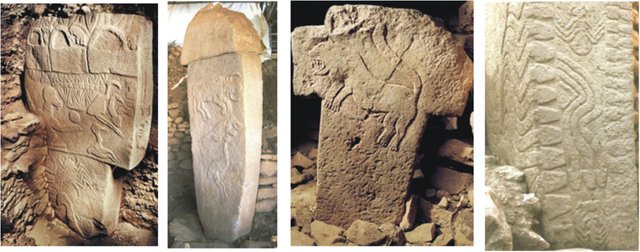
So why did they create this temple?
This is not an easy question to answer, but I can give you an idea.
Gobekli Tepe is a symbol of man mastering nature. The central stone monoliths represent a human man, and surrounding him are the animals he has conquered. It was a place of worship... a place where people gathered and celebrated something. It brought people together, which means that ideas and technologies would have been shared as well. The idea of agriculture no doubt sprouted behind the stone walls as men chatted and feasted.
It would have been a great place of learning as well as worship.
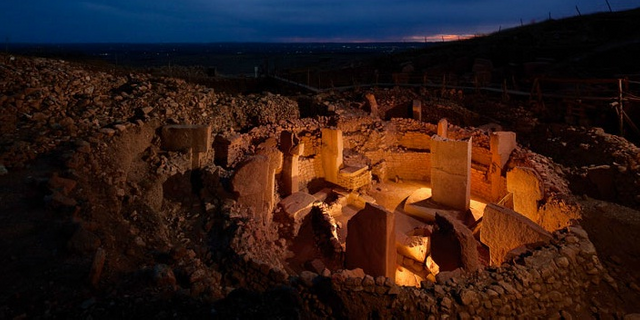
I personally find it interesting that they carve man in the centre of each enclosure, yet they leave him faceless. It is known that people of the time would exhume the bodies of their deceased ancestors and remove their heads as a physical reminder. It is interesting to think that after a period of time, they would resurrect the head of a loved one... but what did they do with it?
I like to think they took those heads to Gobekli Tepe in some kind of ritual, perhaps using the monoliths to represent their bodies whist they celebrated and feasted in the enclose. As you can see below, it is not like they were incapable of carving a detailed human face, as this statue (found in Şanlıurfa and dated at around 9,000BC) shows a fantastic level of artwork.
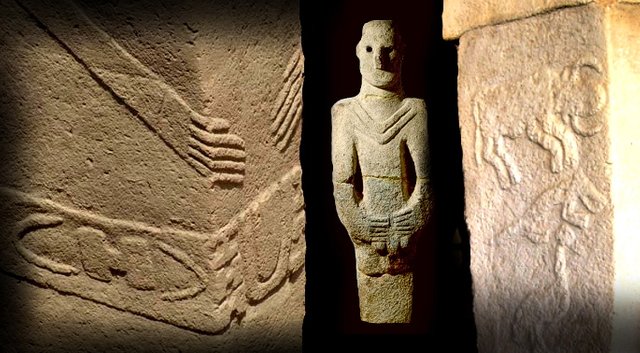
Gobekli Tepe’s demise is just as mysterious as its founding. In Turkish, Gobekli Tepe means “Potbelly Hill.” It was always considered sacred, even before the discovery of the stone circles. What makes this so interesting (not to mention is the reason for its incredible preservation), is that the site was deliberately buried and backfilled. The oldest structures were buried, while the newer structures on the top would have been the latest editions. What is surprising to learn is that with each new structure, the level of detail and sheer size decreases.
This, in my eyes, is a hint to what exactly happened:
As civilisation grew, the early settlements and cities began to rise, each no doubt building their own temples in their own cities... because who the hell wants to march all the way to that hill to worship when you can build something in your own city? It would have been another revolutionary point in history...
... so with this in mind, less people would have been available to build new stone enclosures to symbolise their undying devotion to the beliefs they held. It is symbolic in itself to think that they buried their temples, as if holding a funeral for a culture that was slowly dying.
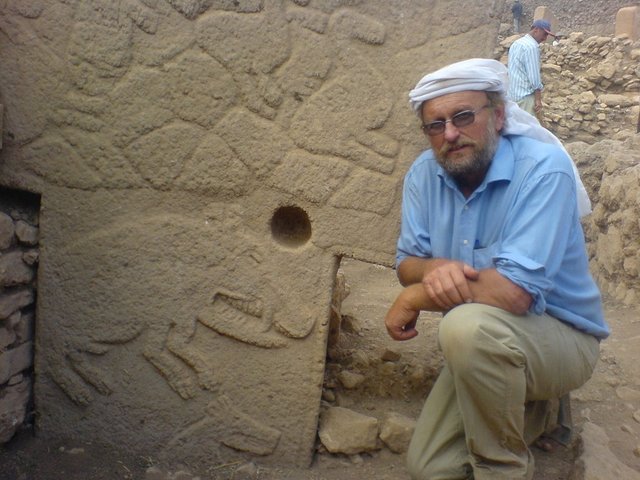
I personally want to thank Dr. Klaus Schmitdt for the decades of digging he has led on this fantastic site. I eagerly look forward to seeing more treasures uncovered from this site. I hope his work has inspired you guys as it has me.
Be sure to check out the NatGeo's pictures of this site. http://ngm.nationalgeographic.com/2011/06/gobekli-tepe/musi-photography
Nice post dude
This certainly is a very interesting site and it throws up a whole lot of new questions.
Things just keep getting older in terms of human activity in this world.
I was reading that they estimated the lower enclosures to be 15,000 years old! Mind blowing.
What gets me is that they could do such fantastic and accurate structures, which leads me to believe they had to have had practice. It is rare that people could get this right first time round... I guess I am suggesting there may be earlier sites knocking around beneath the hills of Turkey.
I am sure there is a lot more to be discovered yet. Or re-discovered may be a better term to use.
Incredible stuff, very informative article. Cheers @elduderino :)
An absolute pleasure shredlord. I am passionate about the the origins of human civilisation and our history. There are things out there that rarely get mentioned, yet (I feel), deserve a respectable place in our history books. Thank you for tanking the time to read it buddy
It is a shame that history lessons were so boring in school. I feel that may put a lot of people off looking into things further when they get older.
Maybe there is a reason for that.
Maybe if we knew the true depths of our history things would not be as messed up in the world as they are today.
Kind of like a collective amnesia :)
How and why this site was covered up is an interesting topic to contemplate also.
Well, one can look to our society: we have a habit of building cathedrals, churches and other religion-based buildings over existing ones. Basically, the old becomes the foundation for the new. In the case of Gobekli Tepe, the older sites (at the bottom of the hill) are backfilled so that the newer sites can be constructed right on top of the existing enclosures. They were no doubt making slight changes to their religion over the years, so the need for new places of worship was needed. Perhaps these changes are not something obvious to us, but to them it must have been a huge difference.